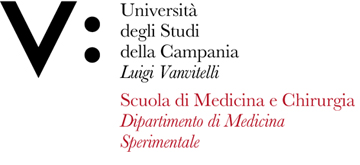Monica LAMBERTI
Insegnamento di AFP OCCUPATIONAL MEDICINE
Corso di laurea magistrale a ciclo unico in MEDICINA E CHIRURGIA
SSD: MED/44
CFU: 1,00
ORE PER UNITÀ DIDATTICA: 10,00
Periodo di Erogazione: Primo Semestre
Italiano
| Contenuti | |
| Testi di riferimento | |
| Obiettivi formativi | |
| Prerequisiti | |
| Metodologie didattiche | |
| Metodi di valutazione | |
| Altre informazioni | |
| Programma del corso |
English
| Teaching language | english |
| Contents | Representative case studies will be discussed. They will be dealing with occupational medicine |
| Textbook and course materials | Slides and/or scientific papers |
| Course objectives | The main goals of AFPs are a) to give information and a methodology in the diagnosis of main traumatic injuries differentiating them from natural diseases; b) to be able to recognize the occupational origin of diseases (etiopathogenesis and differential diagnosis); c) to be able to manage workers subjected to occupational diseases (medical treatment and suitability) |
| Prerequisites | Anatomy, Physiology, Pathology |
| Teaching methods | Interactive discussion of representative case studies based also on pictures and movies available on scientific articles, textbooks and Atlas of forensic pathology and clinical medicine.In particular, as far as regards the occupational medicine: Educational workshops: a) exercise on the evaluation and management of clinical cases in occupational medicine given as examples: clinical cases are illustrated and some data are provided, on the basis of which the student, together with the teacher, must indicate how to evaluate and manage the patient (worker); b) discussion on clinical cases and articles from scientific journals also through the guided consultation of appropriate websites (ACGIH, INAIL, NIOSH, Ministry of Health, etc.). |
| Evaluation methods | The oral exam covers all the aspects of the theory of forensic pathology and occupational medicine. The student should be able to discuss on the topic and be able to connect and analyze the different subjects. |
| Other information | |
| Course Syllabus | Discussion on representative case studies dealing with: Death Certification, Determination of Cause and Manner of Death, Crime scene and death investigation, Autopsy, Post-mortem changes and Time of Death, Personal Identification, Sudden death and sudden infant death syndrome, Blunt Trauma and Craniocerebral injuries, Fire arm injuries, Sharp force injuries, Asphixial deaths and drowning. Examples of clinical cases related to loads manual handling and diseases/disorders of the lumbar spine. Provided data: age, job duties, medical history, symptoms. Evaluation and management of the patient-worker: identification of relevant data for diagnosis purpose, clinical examination, diagnostic hypotheses, instrumental examinations to be requested, assessment of work suitability, eventual medical treatment |








